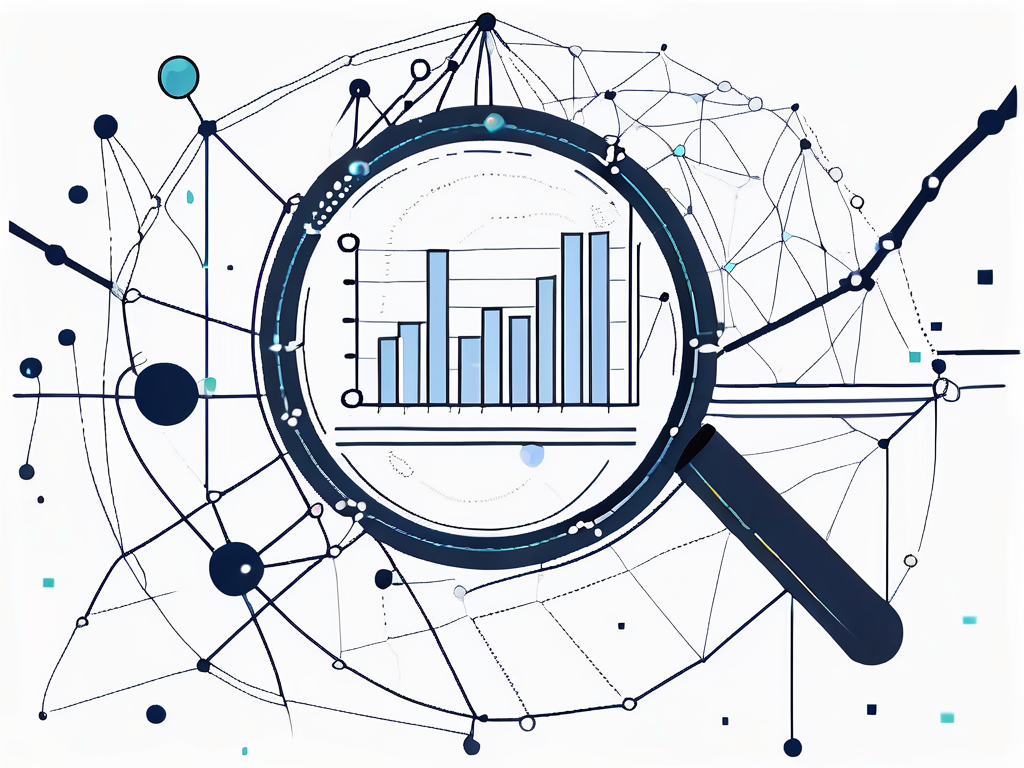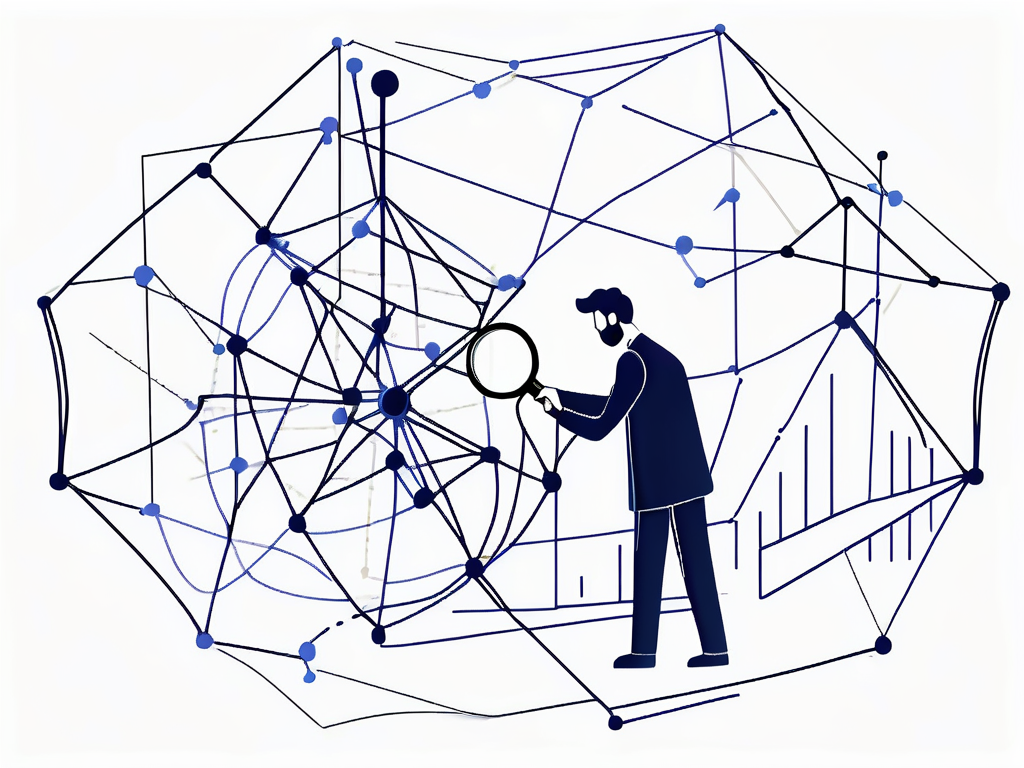In today’s digital age, data is often referred to as the “new oil” – a valuable resource that, when harnessed properly, can unlock immense insights and drive innovation. At the forefront of this revolution is the role of a Data Science Analyst. With their unique combination of technical skills and analytical mindset, these professionals play a pivotal role in extracting knowledge from vast amounts of data and translating it into actionable insights for businesses.
Understanding the Role of a Data Science Analyst
Before delving into the key responsibilities and skills required for this role, it is important to understand the essence of what a Data Science Analyst does. Essentially, they are the bridge between raw data and informed decision-making. They analyze complex datasets, identify patterns, and generate meaningful insights that can drive business strategies. Data Science Analysts use a combination of statistical modeling, programming languages, and creativity to uncover hidden trends and generate accurate predictions.

But what exactly does it mean to analyze complex datasets? It’s not just about crunching numbers and generating charts. Data Science Analysts dive deep into the data, exploring every nook and cranny to extract valuable information. They meticulously collect, clean, and transform data into a format that is usable for analysis. This process involves dealing with missing values, outliers, and inconsistencies, ensuring that the data is accurate and reliable. It’s like being a detective, searching for clues and piecing together the puzzle of data.
Key Responsibilities of a Data Science Analyst
One of the primary responsibilities of a Data Science Analyst is to collect, clean, and transform data into a format that is usable for analysis. They work closely with data engineers and data scientists to ensure that the data is accurate and reliable. Once the data is ready, the analyst applies various statistical techniques, such as regression analysis and predictive modeling, to identify relationships and trends.
But it doesn’t stop there. Data Science Analysts also play a crucial role in the development and implementation of data-driven strategies. They collaborate with business stakeholders to understand their needs and objectives, translating them into analytical questions that can be answered using data. By aligning data analysis with business goals, analysts provide valuable insights that directly impact decision-making processes.
Another crucial aspect of their role is communicating insights effectively to stakeholders. Data Science Analysts must be able to present complex information in a clear and concise manner, using visualizations, reports, and presentations. By translating complex data into actionable insights, they empower decision-makers to make informed choices that drive business growth.
Skills Required for a Data Science Analyst
To excel in this role, Data Science Analysts need a diverse skill set. Firstly, they must have a strong foundation in mathematics and statistics, as these disciplines form the backbone of data analysis. Proficiency in programming languages such as Python, R, and SQL is also essential, as these tools are commonly used for data manipulation and analysis.
A solid understanding of machine learning algorithms and techniques is crucial for building predictive models and making accurate forecasts. Data Science Analysts must also possess excellent problem-solving skills, as they often encounter complex and ambiguous challenges that require creative solutions.
Furthermore, effective communication and collaboration skills are vital for success in this role. Data Science Analysts must be able to work seamlessly with cross-functional teams, including data engineers, data scientists, and business stakeholders. By fostering strong relationships and understanding the unique needs of each team, analysts can deliver insights that resonate with the broader organization.
In conclusion, being a Data Science Analyst is not just about numbers and algorithms. It’s about diving deep into the data, extracting valuable insights, and effectively communicating those insights to drive informed decision-making. It requires a combination of technical skills, analytical thinking, and strong interpersonal abilities. With the increasing importance of data in today’s business landscape, the role of a Data Science Analyst has become indispensable in driving growth and innovation.
The Intersection of Data Science and Business
Beyond their technical expertise, Data Science Analysts play a key role in driving business decisions by leveraging data-driven insights. By analyzing and interpreting data, they provide valuable information that helps businesses optimize performance, mitigate risks, and seize emerging opportunities.
How Data Science Analysts Drive Business Decisions
Data Science Analysts help businesses make informed decisions by uncovering patterns and insights hidden within complex datasets. For example, they may analyze customer behavior data to identify trends and preferences that can inform marketing strategies. By understanding customer needs and preferences, companies can tailor their products and services to better meet market demands, thereby increasing customer satisfaction and loyalty.
Moreover, Data Science Analysts go beyond analyzing customer behavior data. They also delve into demographic data, socio-economic factors, and market research to gain a comprehensive understanding of the target audience. This holistic approach allows businesses to develop targeted marketing campaigns that resonate with their customers on a deeper level, resulting in higher engagement and conversion rates.
Data Science Analysts also contribute to the optimization of business processes. By analyzing operational data, they identify inefficiencies and bottlenecks, enabling organizations to streamline operations and allocate resources more effectively. This can result in cost savings, improved productivity, and enhanced customer experiences.
The Impact of Data Science on Business Performance
The increasing availability of data and advancements in data analysis techniques have transformed the business landscape. Companies that harness the power of data to drive decision-making outperform their competitors. Research has shown that data-driven organizations are more likely to achieve higher profitability and growth.
Furthermore, the impact of data science on business performance goes beyond just making informed decisions. It also enables businesses to stay ahead of the curve in a rapidly evolving market. By continuously analyzing and monitoring data, organizations can identify emerging trends and adapt their strategies accordingly. This agility allows them to seize new opportunities and navigate potential challenges with confidence.
By leveraging data science techniques, businesses can gain insights into customer behavior, market trends, and industry shifts. This knowledge enables them to make proactive decisions and anticipate changes, giving them a competitive edge in the market. Furthermore, data-driven strategies allow organizations to identify and target new business opportunities, expanding their customer base and diversifying revenue streams.
The Data Science Process
The work of a Data Science Analyst is conducted within a well-defined process that encompasses various stages. Understanding this process is essential for effectively leveraging data and deriving valuable insights.

Data Collection and Management
At the beginning of the data science process, Data Science Analysts collect data from various sources, such as databases, APIs, and external datasets. They assess the quality and validity of the data and clean it to remove any inconsistencies or errors. This ensures that the subsequent analysis is based on reliable and accurate information.
Once the data is cleaned, Data Science Analysts manage the data by organizing it into structured formats and creating databases or data lakes. This allows for easy retrieval and ensures that the data is readily accessible for analysis.
Data Science Analysts also consider data security and privacy during the data collection and management stage. They implement measures to protect sensitive information and comply with relevant regulations, such as data encryption and anonymization techniques. By prioritizing data privacy, they ensure that the analysis process is conducted ethically and in accordance with legal requirements.
Data Analysis and Interpretation
With the data organized and prepared, Data Science Analysts move on to the analysis stage. They apply statistical techniques and machine learning algorithms to identify patterns, relationships, and trends in the data. Through exploratory analysis and visualization, they gain a deep understanding of the dataset and discover valuable insights.
Interpreting the analysis results and converting them into meaningful insights is the next step. Data Science Analysts identify key findings, draw conclusions, and make recommendations based on their analysis. This involves clearly communicating complex information to audiences with varying levels of technical expertise, ensuring that the insights are actionable and understood by stakeholders.
In addition to the analysis and interpretation, Data Science Analysts also conduct hypothesis testing to validate their findings. This involves formulating null and alternative hypotheses and performing statistical tests to determine the significance of the results. By rigorously testing their conclusions, they ensure the reliability and credibility of their insights.
Furthermore, Data Science Analysts often collaborate with domain experts to gain domain-specific insights and validate their findings. By combining their technical expertise with the domain knowledge of subject matter experts, they enhance the accuracy and relevance of their analysis.
Challenges Faced by Data Science Analysts
While the role of a Data Science Analyst is highly rewarding, it also comes with its fair share of challenges. Two common challenges faced by professionals in this field are dealing with unstructured data and ensuring data privacy and security.

Dealing with Unstructured Data
Unstructured data, such as text, images, and videos, presents unique challenges for Data Science Analysts. Unlike structured data, which is organized in a predefined format, unstructured data lacks a clear structure, making it difficult to analyze. Data Science Analysts must employ advanced techniques, such as natural language processing and computer vision, to extract valuable insights from unstructured data sources.
Moreover, unstructured data often requires cleaning and preprocessing before it can be effectively analyzed. This process involves removing irrelevant information, standardizing data formats, and handling missing values. Data Science Analysts need to have a strong understanding of data cleaning techniques to ensure the accuracy and reliability of their analysis results.
Ensuring Data Privacy and Security
Data privacy and security are critical concerns for businesses working with large volumes of sensitive data. Data Science Analysts must adhere to strict ethical guidelines and privacy regulations to ensure that the data they handle remains protected. They must implement robust security measures to prevent unauthorized access and mitigate the risk of data breaches.
In addition to implementing security protocols, Data Science Analysts must also stay updated on the latest cybersecurity trends and threats. This includes understanding common attack vectors, such as phishing and ransomware, and being able to identify potential vulnerabilities in data systems. By staying vigilant and proactive, Data Science Analysts can help safeguard the integrity and confidentiality of the data they work with.
Future of Data Science Analysis
The field of data science is rapidly evolving, driven by advancements in technology and an increasing reliance on data-driven decision-making. As we look to the future, several trends are emerging that will shape the role of Data Science Analysts.
Emerging Trends in Data Science
One of the key emerging trends is the integration of artificial intelligence (AI) and machine learning (ML) techniques into data analysis processes. AI-powered algorithms can process vast amounts of data and generate insights at an unprecedented speed. These technologies have the potential to revolutionize the way Data Science Analysts work, enabling them to tackle more complex problems and unlocking new possibilities.
The Role of AI and Machine Learning in Data Science Analysis
The integration of AI and ML in data science analysis enables Data Science Analysts to automate repetitive tasks and focus on higher-value activities. Machine learning algorithms can learn from past data to make accurate predictions and recommendations, augmenting the capabilities of Data Science Analysts. These technologies also enable the analysis of unstructured data, such as social media posts and customer reviews, providing a more comprehensive view of customer sentiment and preferences.
Furthermore, the future of data science analysis holds exciting prospects in the realm of deep learning. Deep learning is a subset of machine learning that focuses on training artificial neural networks to learn and make decisions in a manner similar to the human brain. By leveraging deep learning techniques, Data Science Analysts can uncover intricate patterns and relationships within complex datasets, leading to more accurate predictions and insights.
Another promising area for the future of data science analysis is the integration of data visualization techniques. Data visualization allows analysts to present complex data in a visually appealing and easily understandable format. By using interactive charts, graphs, and infographics, Data Science Analysts can effectively communicate their findings to stakeholders, facilitating better decision-making processes.
As the field of data science continues to evolve, Data Science Analysts will play a vital role in unlocking the potential of data and driving informed decision-making. Their ability to extract meaningful insights from complex datasets will continue to be in high demand, making them a crucial asset for businesses seeking to thrive in the data-driven economy.

Leave a Reply